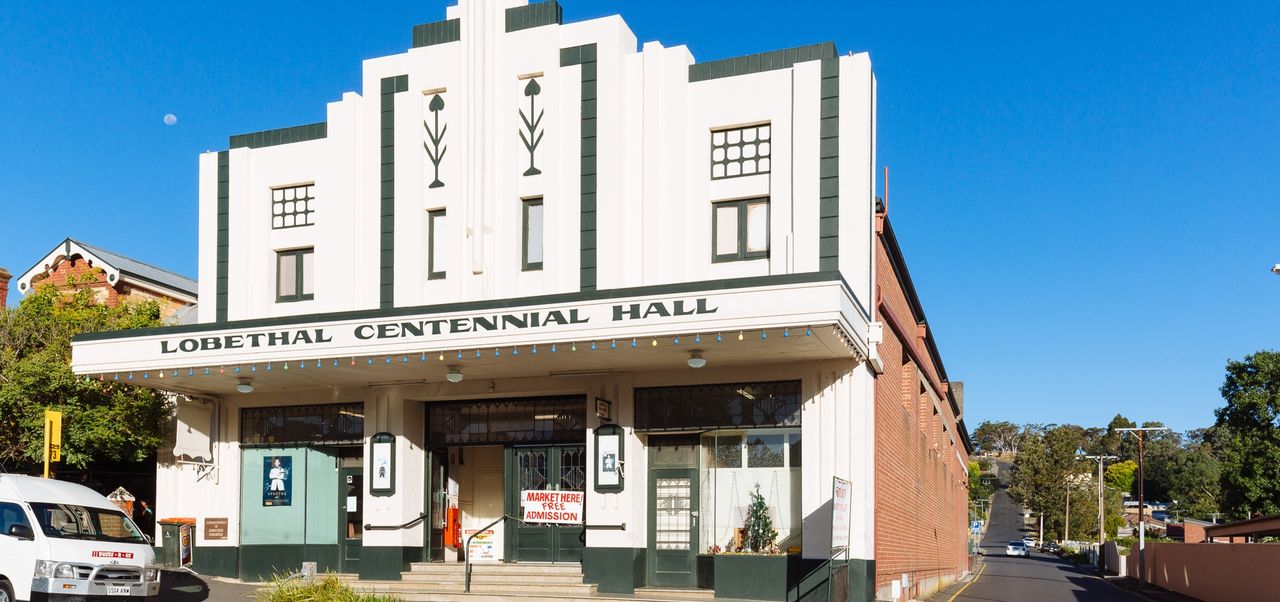On this page
- Obtaining more information about a heritage-listed property
- How heritage places are selected
- Identifying heritage places in the Adelaide Hills
- Protection of heritage places
- Find out more about Adelaide Hills heritage sites
- Adelaide Hills heritage studies
- Council support and incentives for heritage places
Obtaining more information about a heritage-listed property
If you are developing a property that has a heritage overlay you must get planning approval for all external changes.
If your property is located within a heritage overlay and you would like more information about the significance of the property, visit the South Australian Heritage Places Database.
How heritage places are selected
In August 1979, the Burra Charter was adopted by the Australian National Committee of International Committee of Monuments and Sites. This charter provides guidance for the identification, conservation and management of places with cultural heritage significance.
A heritage place can be:
- a site
- an area
- land
- a landscape
- building(s) or other work
- memorials
- trees
- gardens
- parks
- places of historical events
- urban areas
- towns
- industrial places
- archaeological sites
- spiritual and religious places.
- Cultural heritage significance means a place with aesthetic, historic, scientific, social or spiritual value for past, present or future generations.
Council has a strong commitment to protect and enhance the rich historical fabric of the Adelaide Hills which forms an important part of the identity and story of South Australia.
Identifying heritage places in the Adelaide Hills
All councils contain heritage places. Local councils have a role to play in identifying and protecting places of heritage significance.
Most local heritage places are identified through a council commissioned heritage study, carried out by an experienced heritage consultant.
During the initial stages of the study, the community and local historical societies are encouraged to nominate sites and places of potential heritage significance. A nominated place then undergoes a heritage assessment to determine if it is of local or State significance and therefore warrants statutory heritage protection.
Heritage assessments are carried out by qualified and experienced professionals in accordance with the principles of the Burra Charter. Assessment reports (citations) include a statement of significance that identifies the what, how and why of heritage protection.
Sometimes new heritage sites are identified in the Adelaide Hills. After community engagement, Council may initiate a Planning and Design Code Amendment to include and protect new heritage sites.
You can contact us to suggest a new heritage place using the details on our Contact us page. If you call us on 8408 0503 to speak to us about this, make sure to ask for the Strategic and Policy Planning Team.
Protection of heritage places
Local heritage places are protected in the Planning and Design Code through heritage overlays, which require a planning permit to alter a heritage place.
A heritage overlay conserves and enhances heritage. An overlay shows how your land can be used and developed. Importantly, the heritage overlay does not preclude development; it simply makes sure that any new works do not adversely affect the heritage significance of the place. Heritage sites are protected in one of two ways:
Heritage overlays applied to an individual site, building or object
Individual heritage overlays can have controls that require you to get a planning permit to make changes.
A place with its own heritage overlay is an important heritage site. Examples in the Adelaide Hills are the Mount Lofty House, Crafers Institute, Bridgewater Mill, the former Johnston’s Brewery Oakbank and the former Onkaparinga Valley Woollen Mill, Lobethal.
Heritage overlay applied to a broader precinct area
Some heritage sites do not have their own individual heritage overlay. Instead they are identified and protected within a heritage area overlay control that applies over a wider precinct, that may include all the houses in a street or group of streets.
A heritage area overlay can also include places with no heritage value. These places have a heritage overlay so that new development does not have a negative impact on the heritage significance of the whole area.
Examples of some heritage area in Adelaide Hills are Mount Torrens (state heritage area), Ayres Hill Road, Stirling, Mylor historic area and Woodside historic area.
Find out more about Adelaide Hills heritage sites
You can find a list of all individually listed heritage sites and all properties in a heritage area overlay by searching an address using South Australia's Online Planning and Design Code.
Adelaide Hills heritage studies
Council's heritage studies record the heritage significance of the heritage precincts as well as individual places.
-
East Torrens Heritage Survey
-
Gumeracha District Council Heritage Survey
-
Lobethal Valley of Praise
-
Mount Torrens State Heritage Area
-
Onkaparinga Bowl Pioneer Buildings
-
Stirling District Heritage Study
-
Stirling District Heritage Study Vol. 1
-
Stirling District Heritage Study Vol. 2
-
Stirling District Heritage Survey Part 1
-
Stirling District Heritage Survey Part 2
Council support and incentives for heritage places
Heritage advisory services
The Adelaide Hills promotes heritage listing and property maintenance by making available the services of its Heritage Advisor free of charge to owners of Local Heritage Places to provide advice in relation to:
- ongoing management and maintenance issues;
- redevelopment and renovation proposals; or,
- details required for the lodgement of development applications.
The Heritage Advisor will generally be available for two meetings or four hours for an individual property.
If you would like to find out more about Council’s Heritage Advisory Service please contact us on 8408 0400 and ask to speak to the Duty Planner.

